A decade of proud Vietnamese heritage on the world map
On December 2, 2015, at the 10th Session of the Intergovernmental Committee for the Safeguarding of the Intangible Cultural Heritage of UNESCO held in Windhoek (Namibia), the Tug of War rituals and games in Vietnam, Cambodia, Korea and the Philippines were officially inscribed on the Representative List of the Intangible Cultural Heritage of Humanity. The Vietnamese localities participating in the 2015 registration dossier include: Lao Cai, Vinh Phuc (now Phu Tho), Bac Ninh and Hanoi.

Sitting tug of war will be performed at Tran Vu Temple this weekend. Photo: MH
As a cultural practice present in many parts of the world, tug of war is not only an attractive folk game but also a sacred agricultural ritual, reflecting the aspirations of agricultural residents for favorable weather and bountiful harvests. In the Northeast and Southeast Asia regions, tug of war is often held in the spring, marking the beginning of a new farming cycle.
The competition and strength displayed in the game are seen as symbolic of the natural forces – sun, earth and water – that directly influence farming.
In Vietnam, Tug of War rituals and games are concentrated mainly in Vietnamese communities in the Red River Delta, North Central Coast and ethnic minorities in the northern mountainous areas such as Tay, Thai, Giay,...
Depending on the region and ethnicity, the form of tug of war is very diverse: the rope is made of reeds, rattan, forest trees, bamboo... with typical names such as tug of war (Huu Chap - Bac Ninh), sitting tug of war (Long Bien - Hanoi), beak tug of war (Xuan Lai, Ngai Khe), song tug of war (Huong Canh), brisk shoulder (Tay people), shoulder so (Giay people), na bai (Thai people),... The tug of war posture is also diverse - standing, sitting or lying down - showing the creativity and unique identity of each cultural region.
After 10 years of being registered, the number of tug-of-war heritage communities in Vietnam has been constantly increasing. From the initial 6 communities participating in the dossier in 2015, there are now 10 communities in the Vietnam Tug-of-war Heritage Network. The communities are increasingly proactive in connecting, exchanging and performing heritage at home and abroad, contributing to spreading values and raising social awareness about the significance of preserving traditional cultural identity.
Attractive heritage performance activities
Within the framework of the Thang Long - Hanoi Festival, the Hanoi Department of Culture and Sports will organize two main events: the International Conference and the Heritage Performance Exchange.
Accordingly, the commemorative program includes two key events, taking place in Long Bien ward (Hanoi city). The international conference “A decade of protecting and promoting Tug of War rituals and games” took place on the afternoon of November 15.
The workshop gathered more than 250 domestic and foreign delegates (Korea, Cambodia), including representatives of management agencies, researchers, experts and heritage-holding communities from localities: Hanoi, Bac Ninh, Lao Cai, Phu Tho, Ninh Binh... In addition, there were representatives of international organizations, the Embassies of Cambodia, Korea, the Philippines, research institutes, universities,...
This is an international academic forum to look back on a decade of heritage preservation and transmission, draw experiences in cooperation, cultural creation and propose directions for promoting heritage values in contemporary life, from communal house - temple - shrine rituals to education, tourism and international exchange.
The Exchange Program - Performance of Tug of War Ritual and Game took place on the morning of November 16 at Tran Vu Temple, Lane 216, Co Linh Street, Long Bien Ward, Hanoi. The event had the participation of Gijisi Tug of War Association (Dangjin City, Korea) and 8 Vietnamese heritage communities, including: Sitting Tug of War at Tran Vu Temple (Long Bien, Hanoi); Xuan Lai Mine Tug of War (Da Phuc Commune, Hanoi); Ngai Khe Mine Tug of War (Chieu My Commune, Hanoi); Huong Canh River Tug of War (Phu Tho); Huu Chap Tug of War (Bac Ninh); Tug of War of Tay people in Trung Do village (Lao Cai); Hoa Loan Tug of War (Phu Tho); Tug of War of Phu Hao village (Ninh Binh).
In addition to the tug-of-war performance, the program also features drum and lion dances performed by artists from Sehan University (Korea). In particular, the event will launch the “Vietnam Tug-of-War Heritage Community Network”, marking a new step in the connection, preservation and promotion of heritage between localities.
Source: https://hanoimoi.vn/ky-niem-10-nam-nghi-le-va-tro-choi-keo-co-duoc-unesco-ghi-danh-lan-toa-suc-song-di-san-trong-long-cong-dong-722934.html




![[Photo] Prime Minister Pham Minh Chinh receives Lao Minister of Labor and Welfare Phosay Sayasone](https://vphoto.vietnam.vn/thumb/1200x675/vietnam/resource/IMAGE/2025/11/11/1762872028311_dsc-2246-jpg.webp)





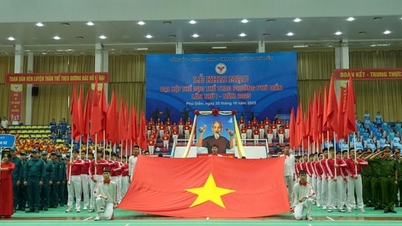
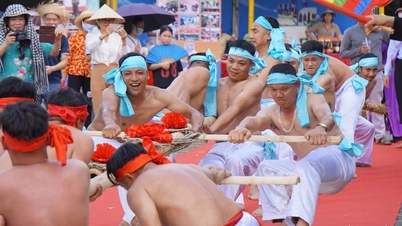

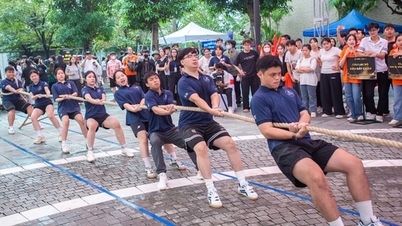






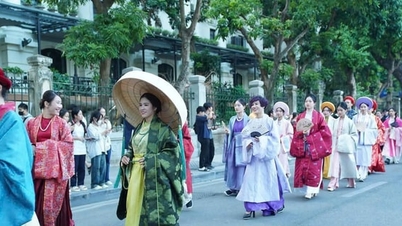


























































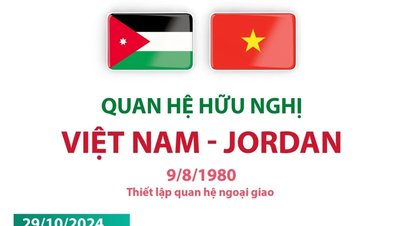















![[Motion Graphics] How to submit red book on VNeID](https://vphoto.vietnam.vn/thumb/402x226/vietnam/resource/IMAGE/2025/11/12/1762909837040_fb_thum-web-bht-1.jpeg)








![Dong Nai OCOP transition: [Article 3] Linking tourism with OCOP product consumption](https://vphoto.vietnam.vn/thumb/402x226/vietnam/resource/IMAGE/2025/11/10/1762739199309_1324-2740-7_n-162543_981.jpeg)








Comment (0)